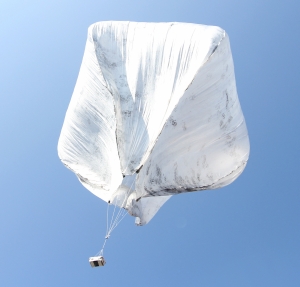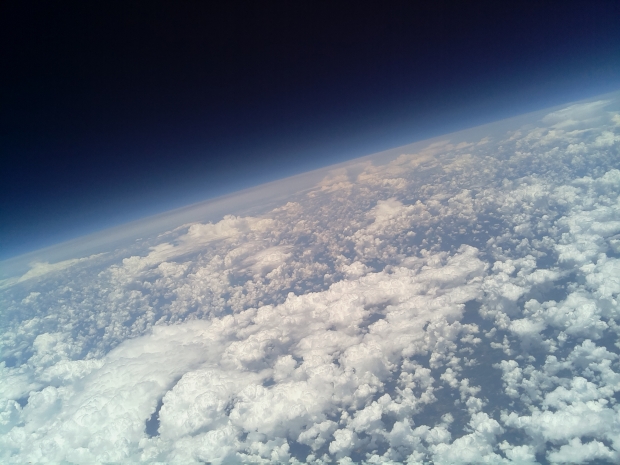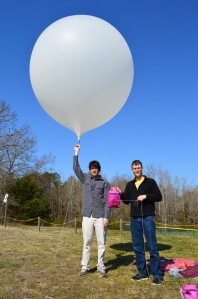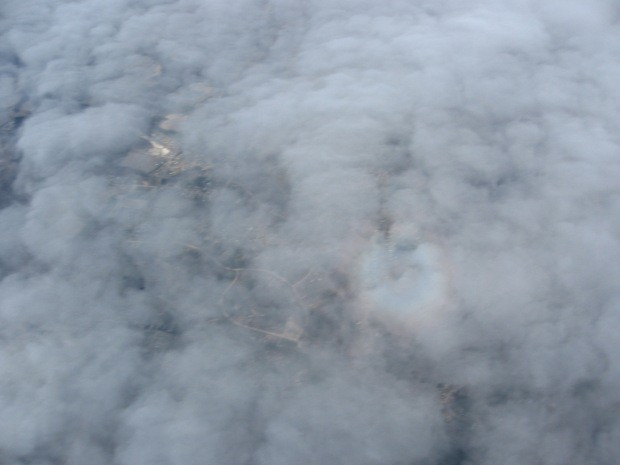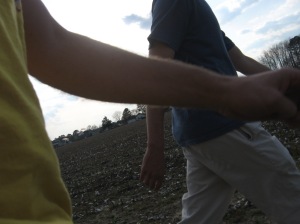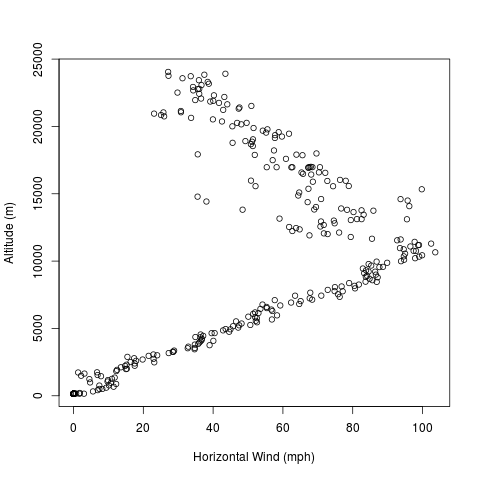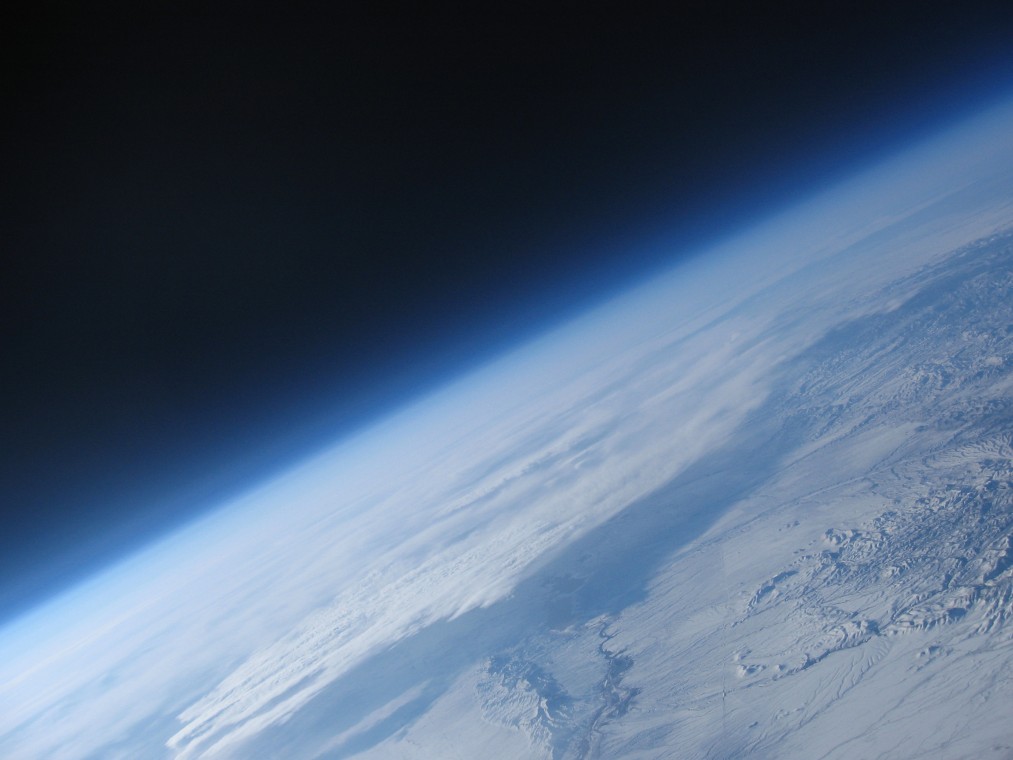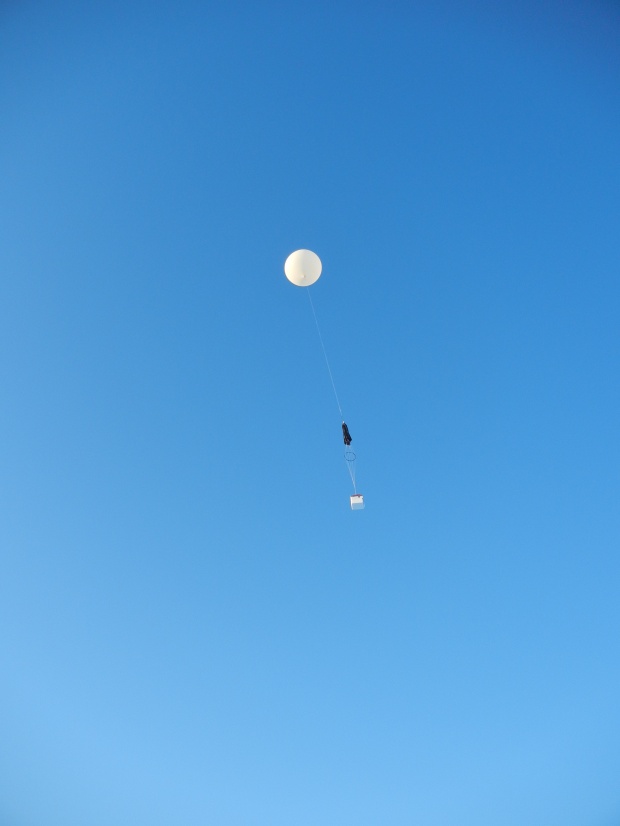This balloon can deliver a 2 lb payload to 72,000 ft (22 km) and fly for as long as the sun shines. It can be hand launched by two people without the aid of electricity and lift gas. The envelope is built from cheap, easy to find materials. Total construction time is 4-6 hours for a team of two.
It’s best to find a large area, such as a gym, for building the envelope. Take care to not damage the plastic – I recommend taking your shoes off so that you can step on the balloon material without ripping it. When it comes time to darken the envelope, I highly recommend *not* doing it somewhere where lots of charcoal dust will cause a problem. We recently did it in a parking deck, which meant that spills were no big deal and also kept the wind from blowing the balloon around.
Materials:
-400 x 12 foot sheet of 0.33 mil plastic sheeting (sold as “light duty paint dropcloth” at hardware stores)
-Several rolls of heavy duty clear packing tape, such as these on Amazon.
-Scissors
-Permanent marker
-Tape measure
-Heavy duty string or cord (I use parachute cord)
-Air float charcoal, at least 1 lb
Building the envelope:
This is where you cut the plastic into the required shape, tape it together into a balloon, and check it for holes. Click here to see a time lapse of this process.
Step 1: Cut the plastic sheeting into five 30 ft sections. This is around the 10 second mark in the video above.
Step 2: Unfold them until you have five 30 x 12 rectangular sheets of plastic. This is around the 15 second mark in the video above.
Step 3. Fold each sheet once across the longer section and once across the shorter section. Now you have five 15 x 6 ft sections. This is between the 15 and 25 second mark in the video.
Step 4. Lay the five sheets on top of each other, all facing the same way. Find the corner that forms the center of the original sheet (this is where the fold seams all meet each other). That corner is in the video around the 28 second mark, next to the guy in the blue shirt. We spend
Step 5. Consider the corner described in the previous point as the origin, the long part of the sheets as the X axis, and the short part of the sheets as the Y axis, draw the following points using a permanent marker (units in inches):
X Y
0 72
18 71
36 68
54 64
72 58
90 51
108 42
126 33
144 22
162 11
180 0
These points describe a half gore pattern, which is how we turn two dimensional objects (plastic sheets) into a 3 dimensional object (a spherical balloon). Here, it happens to be a sine curve. This is from the 40 to the 50 second mark in the time lapse.
Step 6: Carefully insure that all sheets in the stack are lined up with each other (from about 28 to 40 seconds in the video). Then, using a pair of scissors, carefully cut along the curved line defined by the points drawn on the top sheet (50-52 second mark).
Step 7: Unfold the sheets; you should have 5 diamond shaped ones. These are gores, and they form the envelope of the balloon. The other, roughly triangular pieces of plastic are trash (52-54 second mark).
Step 8: Tape one edge of the first gore to one edge of the second gore using packing tape. The seam should be centered in the tape, with no gaps between successive pieces of tape. We have one person hold the two sheets together and the other tape them together, see photo below:
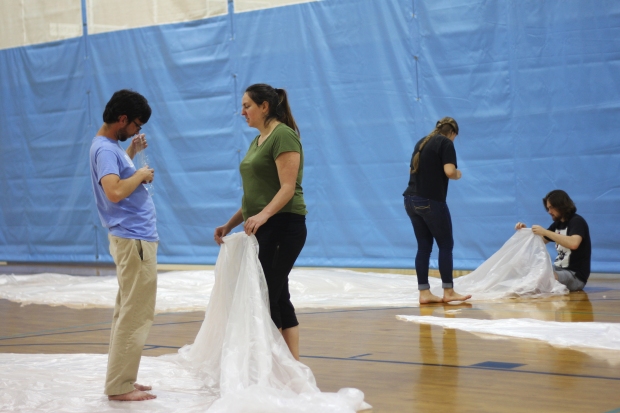
Taping the gores together. If you have more people, you can have multiple teams going at once! Photo by Mary Lide Parker, UNC Research Communications.
Step 9. Add the next three gores successively, to make an ever larger sheet of plastic. Finally, tape the two ends of the sheet together: you’ve now made a ball a little more than 19 feet across (the envelope of the balloon!) This process takes up from the 1 minute to about the 2 minute mark in the video.
Step 10: Find one of the two “poles” of the balloon (where the taped seams all meet). Cut the pole off to make a hole about 5 feet across. This will become the bottom of the balloon, and allow you to fill it with air. We do this at 2:14 in the video.
Step 11: Carefully tow the balloon back and forth, holding the hole open. It will begin to fill with air. This is from 2:15 to 2:17.

Filling the balloon with air prior to checking for holes. Photo credit: Mary Lide Parker, UNC Research Communications.
Step 12: At this point, it should be pretty clear whether or not you built the balloon correctly. If everything looks good, send a brave soul inside to check the envelope for holes (gaps in seam tape are the most common culprits). Someone on the outside can fix the holes as they are found. Be careful, of course, since the air supply in there is finite. This is from 2:18 to 2:36 in the video.
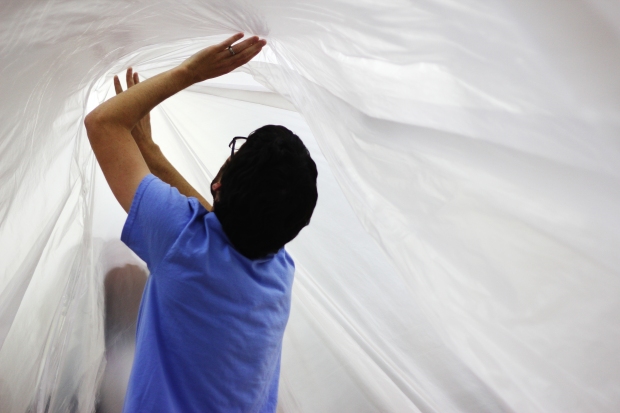
Checking each seam for holes. Photo credit: Mary Lide Parker, UNC Research Communications.
Step 13: Deflate and pack the balloon. Start from the pole opposite the hole, and slowly push air towards the open end of the balloon. Don’t go too fast or you’ll pop sections of the balloon. It’s pretty simple to then stuff the balloon into a big garbage bag for storage. This is from 2:37 to the end of the video.
Rigging the balloon:
The open hole on one side of the balloon is very weak and susceptible to tearing. Also, it does not provide any means of attaching a payload. Thus, we need to reinforce it and provide a way to attach our equipment.
A simple way to do this is to run some tape around the bottom, poke some holes in the tape, attach some string, and tie your payload on. Our first versions had this system, but it was not ideal; in fact it is probably why we had an “unscheduled rapid disassembly” at 72,000 ft last May.
A much better way is to tie a length of strong cord (parachute cord, for example) into a loop slightly larger than the opening of the balloon. Pull the opening through the loop, fold it around the loop, and tape the edge of the opening to the outer envelope of the balloon. This provides a very strong lining system for the bottom. A payload can be attached by tying guy lines onto the cord loop. I believe the best place for these guy lines is right at each seam, since the seam tape provides a means of distributing the load along a relatively strong portion of the envelope. The photo below shows one edge of the balloon with the parachute cord folded in, as well as one payload attachment string.

Darkening the envelope:
This is the most fun part (besides launching). Find a place that is protected from the wind but will allow you to make a big mess. As mentioned earlier in the post, an indoor parking deck is ideal.
Unpack the balloon and lay it out on the ground. Throw a generous quantity of air float charcoal into the open end, and shake it all the way through the balloon. The charcoal is so fine it will coat the interior of the balloon, changing it from white to dirty gray.

Midway through darkening our solar balloon.
Then, wait for good weather conditions:
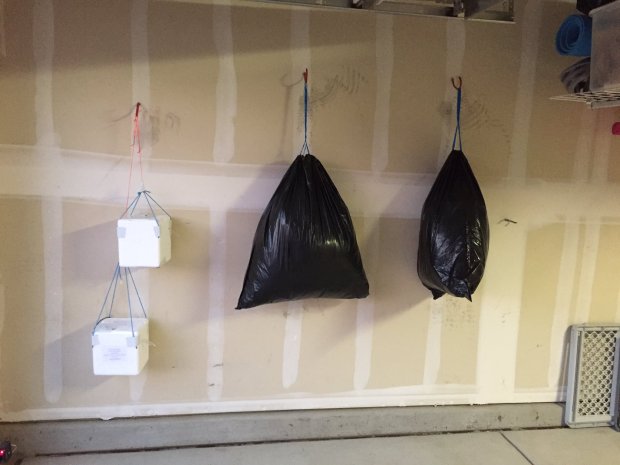
Two solar balloons and their payloads in storage.
Launching:
The launch procedure is simple: tow the balloon back and forth until it fills with air, attach the payload, let the whole thing heat up for a bit, and off it goes. Here’s a video of us doing it. Simple, right? No.
Actually, launching solar balloons is hard. It’s a lot harder than helium balloons, since ground conditions are much more restrictive. With this in mind:
An ideal day for solar ballooning has clear skies and calm ground winds. This is actually pretty rare, and you may have to wait several weeks for an opening. If you start to get impatient, keep in mind that even winds barely strong enough to move leaves can make handling a 20 foot tall balloon very dicey. Early mornings (just after dawn) are best.
An ideal site for a launch is a large open field, where slowly rising balloons will not get caught in trees, power lines, etc. An alternative is a parking lot between tall buildings, since wind tends to go around them. This is risky, though, since the balloon can still hit and potentially snag on them.
Finally, if you are planning on recovering your payload, realize that the balloon will fly until the sun sets. This means that even a 10 mph wind can carry the balloon 120 miles, assuming 12 hours at float. Many times, the winds in the upper troposphere/lower stratosphere are much stronger. Careful consideration of the wind profile from 0 to 100,000 ft above sea level is thus imperative before attempting a full day flight with payload recovery.
Happy ballooning!
